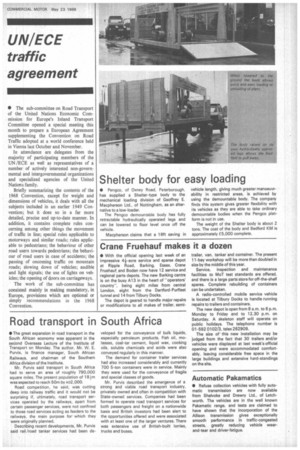Road transport in South Africa
Page 25

If you've noticed an error in this article please click here to report it so we can fix it.
• The great expansion in road transport in the South African economy was apparent in the second Overseas Lecture of the Institute of Transport on Monday. The author, Mr. W. E. Purvis, is finance manager, South African Railways, and chairman of the Southern Africa division of the Institute.
Mr. Purvis said transport in South Africa had to serve an area of roughly 790,000 square miles. The present population of 18 !Jn was expected to reach 50m by 402,000.
Road competition, he said, was cutting deep into railway traffic and it would not be surprising if, ultimately, road transport services operated by the railways, apart from certain passenger services, were not confined to those road services acting as feeders to the railways, the main purpose for which they were originally planned.
Describing recent developments, Mr. Purvis said rail /road tanker services had been de veloped for the conveyance of bulk liquids, especially petroleum products. Fish oil, molasses, coal-tar cement, liquid wax, cooking oils, soluble chemicals and acids were also conveyed regularly in this manner.
The demand for container trailer services had also increased considerably and currently 700 5-ton containers were in service. Mainly they were used for the conveyance of fragile and special classes of goods.
Mr. Purvis described the emergence of a strong and viable road transport industry, privately owned and often in competition with State-owned services. Companies had been formed to operate road transport services for both passengers and freight on a nationwide basis and British investors had been alert to the opportunities offered and were associated with at least one of the larger ventures. There was extensive use of British-built lorries, trucks and buses.
































































































































